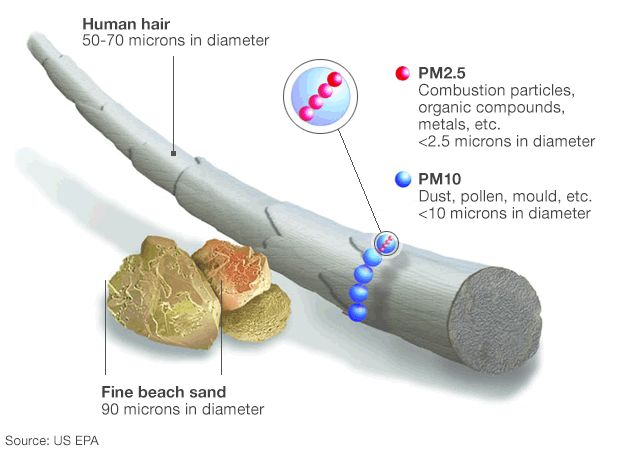Toxic smog returns to Delhi after Diwali
 Reuters
ReutersAir pollution in the Indian capital has risen to hazardous levels after firecrackers were set off to celebrate Diwali despite a court ban.
Residents awoke on Thursday to find the city blanketed in a toxic fog.
The Supreme Court had restricted the timeframe for setting off firecrackers to only two hours in the night, but the order was openly flouted.
Diwali, the most important Hindu festival in north India, celebrates the victory of good over evil.
The levels of tiny particulate matter (known as PM 2.5) that enter deep into the lungs reached as high as 999 micrograms per cubic metre in some areas of the capital on Thursday morning, according to reports.
The US embassy tweeted that the air quality measure in Delhi had soared to 526, putting the pollution in the "severe" category and posing a serious health risk to residents.
Last month, the Supreme Court said it wanted to test if banning fireworks would make a difference to Delhi's air quality, ranked among the worst in the world.
 Reuters
ReutersBut despite the restrictions and the two-hour deadline on the night of the festival, residents of Delhi continued to burn firecrackers until late.
People took to social media to express their frustration over residents flouting court orders with impunity.
Allow X content?
Allow X content?
Allow X content?

Allow X content?

Allow X content?

Others said blaming the fireworks for the spike in pollution was unfair, as low wind speeds, dust from construction sites, rubbish burning and diesel vehicles also contributed to increasing pollution levels.
Also, air quality in the city worsens every year in November and December as farmers in the neighbouring states of Punjab and Haryana burn crop stubble to clear their fields.
Allow X content?
The Indian capital is the sixth worst place in the world for pollution, according to World Health Organisation (WHO) data.
The Graded Response Action Plan (GRAP), an emergency government initiative to try and improve conditions, has also launched around Delhi. It bans activities like rubbish burning to try and improve air quality.

What are PM 2.5 particles?

- Particulate matter, or PM, 2.5 is a type of pollution involving fine particles less than 2.5 microns (0.0025mm) in diameter
- A second type, PM 10, is of coarser particles with a diameter of up to 10 microns
- Some occur naturally - e.g. from dust storms and forest fires, others from human industrial processes
- They often consist of fragments that are small enough to reach the lungs or, in the smallest cases, to cross into the bloodstream as well
